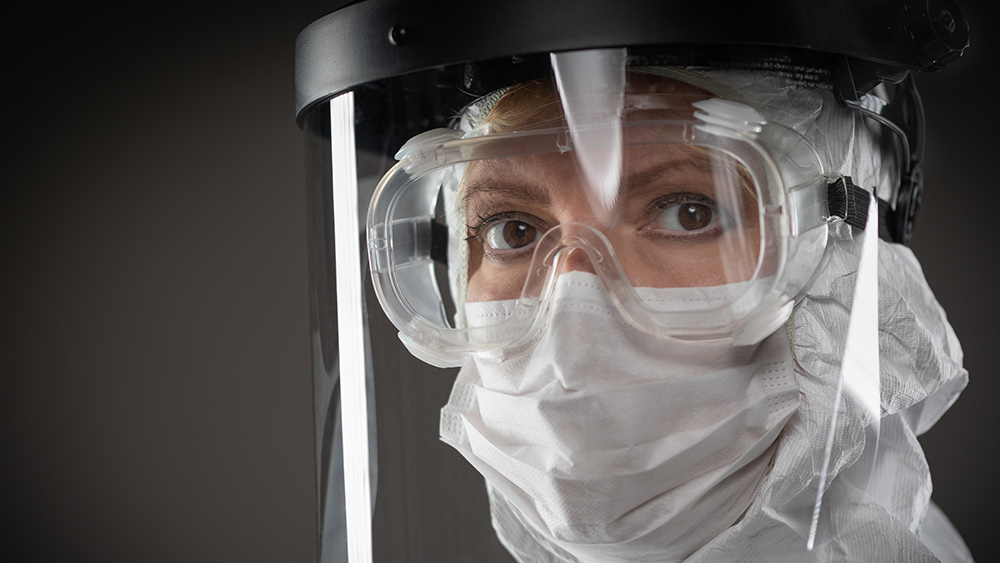Why is exposure to airborne metal particles associated with a greater risk of premature death?
04/13/2020 / By Franz Walker

While studies have shown that air pollution is associated with an increased risk of premature death, for a while, scientists couldn’t identify which specific airborne particles were responsible. Now a recent study has finally determined the metal particles linked to the increased risk of premature death.
Researchers from the Barcelona Institute for Global Health (ISGlobal) participated in a study that used wild moss to estimate human exposure to airborne metal particles. The aim of the study was to analyze the relationship between atmospheric metal pollution and the increased risk of premature death among people living in rural France.
“There have been very few studies on the health effects of airborne metal pollutants, partly because of technical limitations, such as the lack of stations measuring air pollution,” explained Benedicte Jacquemin, a researcher at ISGlobal and the French National Institute of Health and Medical Research (INSERM) and author of the study.
Estimating airborne metal particle exposure from moss
To get a picture of which airborne metal particles contributed to early mortality, the researchers looked at the data from 11,382 participants belonging to France’s GAZEL cohort. Short for Gaz and Electricite, the GAZEL cohort is a group of 20,625 employees of the French national gas and electricity companies. Since 1989, the health status, lifestyle, and socioeconomic and occupational factors of these participants have been continuously monitored by researchers.
Using the data from the participants, the researchers then took data from moss samples taken by from a bio-monitoring program of the French National Museum of Natural History. They chose moss due to its ability to retain any airborne metal particles it absorbs for a very long time.
“[It] would be a useful tool for estimating the atmospheric metal exposure of people living in rural areas,” stated Jacquemin.
The samples were analyzed in the laboratory to measure the presence of a number of elements.
The researchers constructed a mathematical model using the geolocation data from each moss sample and the data from the laboratory analysis. Then, they used this model to map the exposure of each participant to the metals under the study. These metals, namely aluminum, arsenic, calcium, cadmium, chromium, copper, iron, mercury, sodium, nickel, lead, vanadium and zinc, were divided into whether they were naturally present in the air or anthropogenic (originating in human activity).
Based on the results, the participants exposed to higher amounts of anthropogenic metals faced an increased risk of premature death. While these metals – cadmium, copper, mercury, lead and zinc – are naturally present in the Earth’s crust, their presence in the atmosphere is mostly from human activities such as industry, transportation and heating.
“Our results indicate that the metals present in the airborne particulate matter could be a key component in the effects of air pollution on mortality,” stated Jacquemin.
Even low levels of air pollution are deadly
All the participants in the GAZEL cohort lived in rural areas of France, where they were exposed to less air pollution than people living in cities, “which gives us an idea of the seriousness of the health effects of air pollution, even at relatively low levels of exposure,” said Jacquemin. (Related: It’s in the air: Air pollution can increase the risk of atherosclerosis, study says.)
With even those living in rural areas already affected by these metal particles already at risk, the study raises questions for those living in urban areas where there are higher levels of air pollution. As more and more people are moving into cities to find work, perhaps its time more thought was put into the air that people breathe.
Sources include:
Tagged Under: airborne particulates, Aluminum, arsenic, cadmium, calcium, chromium, cities, copper, Ecology, environ, environment, iron, Lead, mercury, metal particles, metals, mortality, moss, nickel, Plants, premature death, sodium, urban areas, urbanization, vanadium, zinc


















